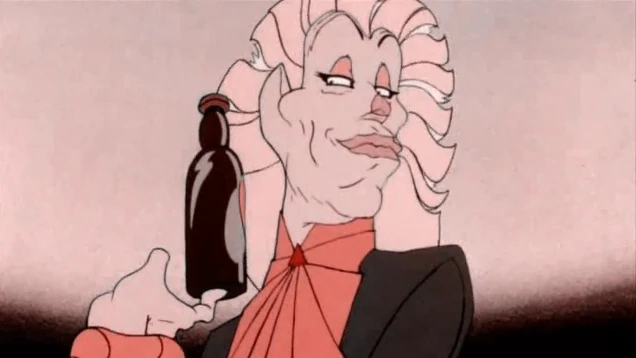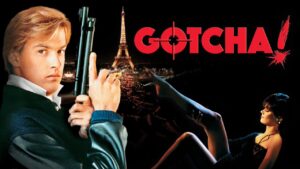By Clemency Grave
Arts & Apparitions Correspondent, The Underground Mirror
A Film That Almost Didn’t Exist (But Does)
You know me by now, I have a soft spot for broken and lost things. An obscure, half remembered midnight showing has more cache than a box office hit any day. In 1983, a Canadian animation studio called Nelvana released a film that almost no one saw.a psychedelic, post-apocalyptic, rock-infused animated feature titled Rock & Rule. It starred mutated humanoid animal characters, arcane technology, and the disembodied echo of rock ‘n’ roll gods: Lou Reed, Debbie Harry, Robin Zander of Cheap Trick, and Iggy Pop. There’s even a cameo by Earth, Wind & Fire, because why not? The apocalypse needs groove.
What was intended as a bold new frontier in adult animation soon devolved into production chaos. The story was rewritten multiple times. Characters were reshaped to match newly cast—or newly departed—voices. Scenes were reanimated. Dialogue was patched over. David Bowie and Mick Jagger were once attached but walked. Continuity suffered. Ambition collided with panic. Truckloads of dollars were set on fire.
Then came MGM, who bought the project sight unseen, and then,like so many executives who mistake panic for strategy, butchered it. They sliced, dubbed, deleted, sanitized. When they were done, they shelved it and walked away, leaving Nelvana bruised and the film labeled the most expensive animation failure in movie history.
And yet.
Beneath the scarring edits, the production compromises, and the distribution betrayal, something honest remained. A voice. A message. Rock & Rule survives because it was born from sincerity—an act of creation by artists who believed music, art, and collaboration could still change the world.
Or at least shatter a few walls.
Mok Swagger: Cult of the Self
“My name is Mok. Thanks a lot.”
That tossed-off exit line is the essence of Mok Swagger, the film’s magnetic villain, its black hole of ego. Visually modeled after Mick Jagger, laced with Bowie’s androgynous mysticism and the theatricality of Klaus Nomi, Mok isn’t a rising star. He’s post-fame a god in decline, monument to himself, long past worship but refusing to dim. Where Bowie shifted personas to evolve, Mok reinvents himself because he no longer remembers what he is.
He’s the artist who got everything and now wants something worse:
Not legacy. Immortality. Not resonance. Control.
Mok doesn’t just influence audiences, he reprograms them. His performances are precision assaults: hypnotic orbs, holograms, voice-harvesting tech. He doesn’t sing—he conducts experiments. He doesn’t crave fans, he demands followers.
The demon he summons isn’t mythic or metaphysical, it’s synthetic. Born of electricity, distortion, and corrupted voice. Mok doesn’t sell his soul at the crossroads; he builds his own Satan with amplifiers and ego. He is the technocrat of charisma, the false messiah of frequency.
But what makes Mok truly dangerous isn’t evil. It’s belief. He believes in the power of music but has forgotten its purpose. He believes he can bend art to his will. And Rock & Rule lets him try, only to show us what dies in the process.
Mirror of Our Machines: Art vs. Tech
Mok’s world is wired, synthetic, optimized—and entirely hollow.
Long before algorithms, he saw the future: a place where art was no longer made to express, but to extract.
While Angel and Omar create from friction and feeling, Mok manufactures spectacle. His sound is not voice, it is architecture. His performances are illusions, his audience entranced not by meaning, but by mechanism.
In Mok’s world, art isn’t shared. It’s harvested.
He wields voice-stealing tech, hypnotic media, projection-based control—all foreshadowing the cold mechanics of the entertainment systems to come.
This is not an anti-technology screed. It’s a warning:
The moment expression becomes replication, when meaning is outsourced to machines, the soul exits the building.
Mok doesn’t join the future. He colonizes it. And like all false prophets who mistake spectacle for salvation, he’s undone not by power, but by truth.
Angel & Omar: Harmony as Resistance
Enter Angel and Omar, the spark that Mok can’t program.
Angel’s voice is not a weapon. It’s a gift.
Omar, initially insecure and dismissive, is a reluctant co-star. Their bond is imperfect. He doubts her. She pushes back. But when it matters, they find harmony.
Their relationship isn’t polished. It’s real. And that, in this universe, is a superpower.
In the climax, the demon summoned by Mok’s manufactured chaos is undone not by might—but by a duet. Collaboration over corruption. Connection over control.
The prophecy Mok misquotes “No one can stop it” was never about his triumph.
It meant: only no one person can stop it. It takes two.
Only through unity could the demon be silenced.
Angel and Omar are flawed. But they’re honest. And in Rock & Rule, that’s the final note: Sincerity defeats simulation.
The Demon Was Real: MGM Was Mok
Let’s not pretend Rock & Rule failed because it was too weird. It failed because it was betrayed by the same system it prophesied.
MGM, like Mok, bought something it didn’t understand—then tried to control it. They chopped it up, scrubbed out the risk, dulled the edge, buried the soul. They tried to dominate the work instead of listening to it. And like Mok, they unleashed a demon: irrelevance.
But the animators, the musicians, the writers? They were Angel and Omar, creating something pure inside the madness.
Just as Mok lost control of the very force he tried to harness, so too did the studio. Their edits, delays, and disinterest couldn’t kill the core. It was already alive.
And that’s why Rock & Rule survived as a cult classic: Not because it succeeded. But because someone heard the note and kept playing.
Final Chorus
Rock & Rule is a flawed film. But it is not a failed one. It is a love letter. A warning.
A relic of unfiltered artistic energy, flickering in the rubble of commerce and control.
So listen closely:
Not every flop is a failure. Not every ruin is empty.
Some demons are born of mirrors.
And some songs—once sung—cannot be unsung.


Be First to Comment